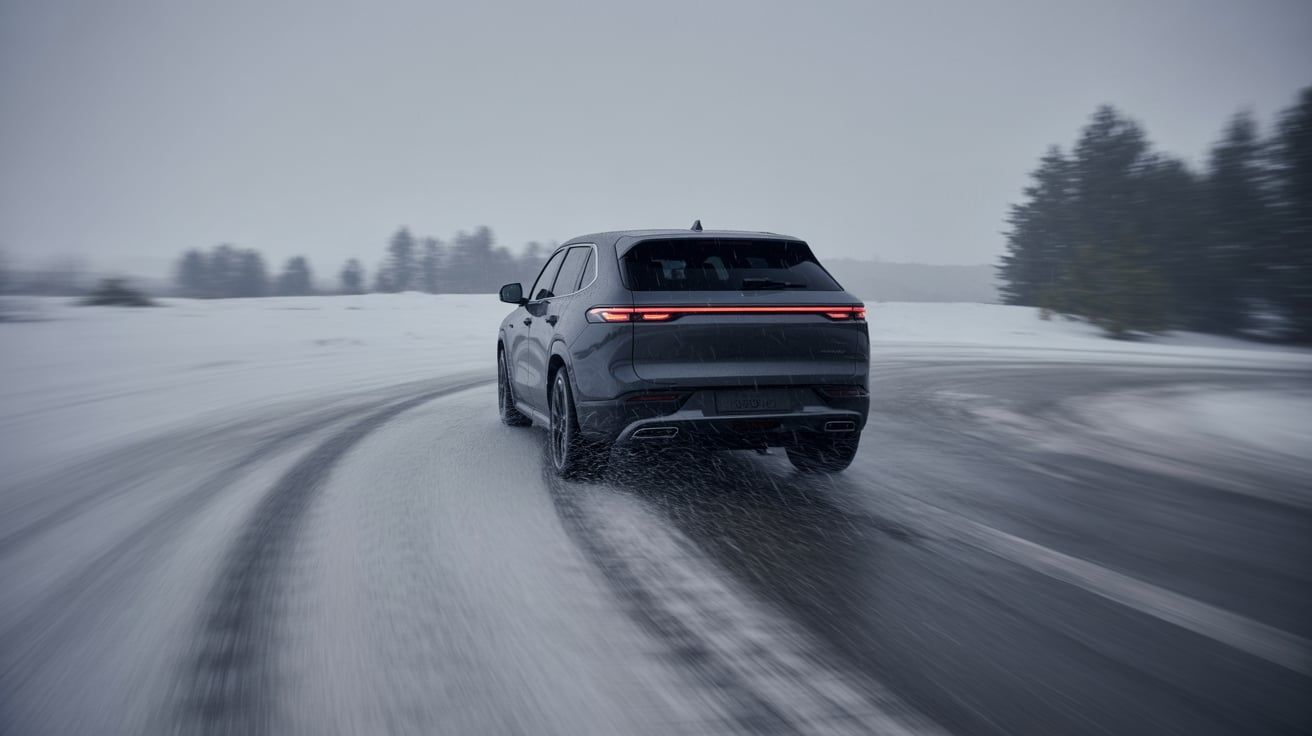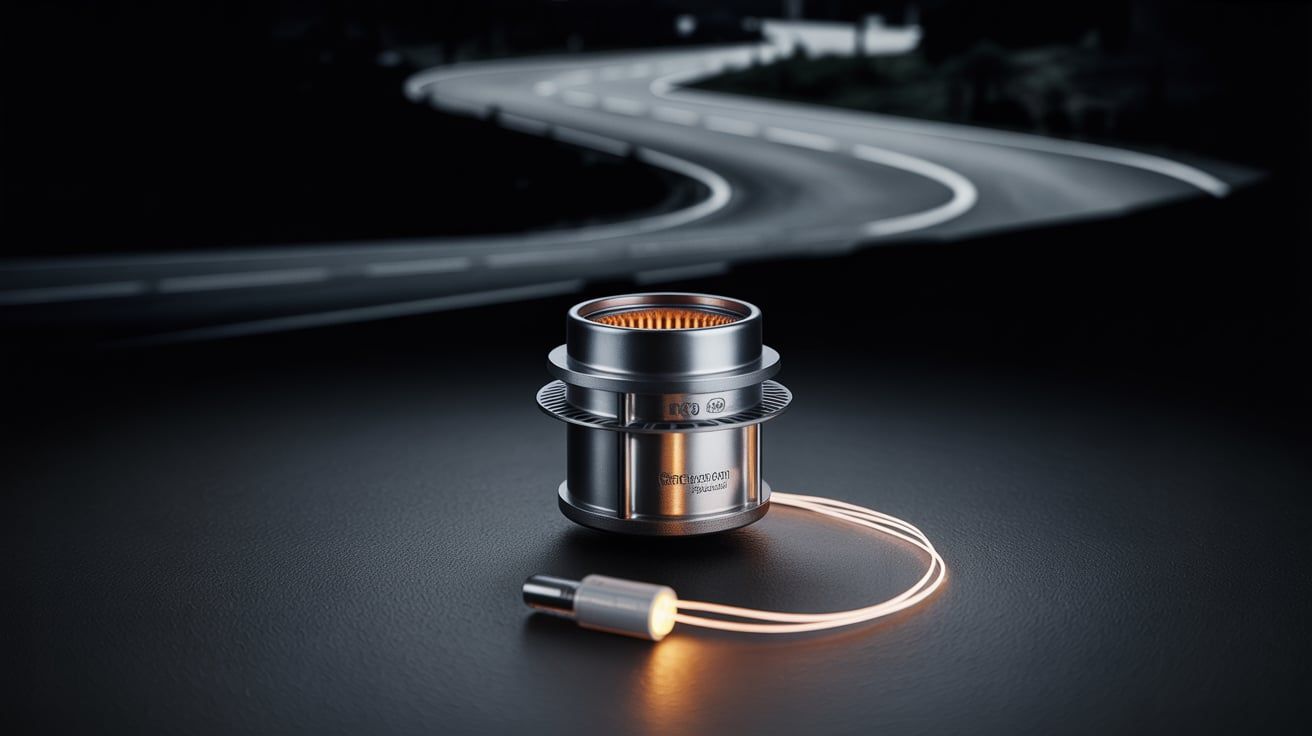The Winter Driving Myth That Gets People Killed
The Illusion of Control: A Winter's Tale
Imagine this: You're cruising down a snow-covered highway, feeling confident in your all-wheel-drive SUV. The radio's on, the heat's blasting, and you're maintaining a speed that feels "reasonable" for the conditions. Suddenly, the car in front of you slams on its brakes. You react, hitting your own brakes, but instead of slowing down, your vehicle keeps sliding forward, seemingly defying physics. The sickening crunch of metal follows. What went wrong? You believed the myth that all-wheel drive, or even four-wheel drive, makes you invincible in winter. This dangerous misconception is a leading cause of winter accidents, turning what should be a safe journey into a terrifying ordeal.
We often overestimate our abilities and the capabilities of our vehicles, especially when faced with challenging conditions. This overconfidence, fueled by the false sense of security provided by certain features, can have devastating consequences. Let's debunk this myth and explore the realities of winter driving to keep you and others safe on the road.
All-Wheel Drive vs. All-Wheel Stop: Understanding the Difference
The core of the problem lies in understanding what all-wheel drive (AWD) and four-wheel drive (4WD) actually do. These systems primarily enhance acceleration and traction on slippery surfaces. They distribute power to all wheels, allowing you to get moving more easily in snow or ice. However, they do absolutely nothing to improve your braking or steering capabilities. This is where the illusion of control comes in. Drivers often accelerate as if the roads are clear, forgetting that stopping distance is significantly increased in winter conditions.
Think of it this way: AWD helps you climb a snowy hill, but it won't prevent you from sliding back down if you lose control. The physics of braking are the same for all vehicles, regardless of their drivetrain. Your tires are the only point of contact with the road, and their ability to grip is severely compromised by snow and ice. This is why winter tires are so crucial, a point we'll delve into later.
The Deadly Dance of Speed and Stopping Distance
Speed is a critical factor in winter accidents. Even a small increase in speed can dramatically increase your stopping distance on snow or ice. The relationship isn't linear; it's exponential. This means that doubling your speed more than doubles the distance required to come to a complete stop. In ideal conditions, a car traveling at 60 mph might need around 200 feet to stop. On snow or ice, that distance can easily triple or even quadruple.
Consider this scenario: You're driving at 40 mph on a snowy road, thinking you're being cautious. A pedestrian suddenly steps into the street. You react instantly, but your vehicle continues to slide, covering a much greater distance than you anticipated. The consequences can be tragic. Always adjust your speed to the conditions, leaving ample space between you and other vehicles. Err on the side of caution; it's better to arrive late than not at all.
Tires: The Unsung Heroes of Winter Safety
Your tires are the most important safety feature on your vehicle in winter. All-season tires, while convenient, are a compromise. They're designed to perform adequately in a variety of conditions, but they don't excel in any particular environment. Winter tires, on the other hand, are specifically engineered for cold temperatures, snow, and ice. They feature a softer rubber compound that remains pliable in freezing conditions, allowing them to grip the road more effectively. They also have a unique tread pattern with sipes (small slits) that bite into snow and ice, providing superior traction.
Investing in a set of winter tires is one of the best things you can do to improve your winter driving safety. They can significantly reduce your stopping distance and improve your handling in slippery conditions. Remember to install them on all four wheels to maintain balanced handling. Don't wait for the first snowfall; install them as soon as temperatures consistently drop below 45 degrees Fahrenheit.
Beyond AWD: The Importance of Winter Driving Skills
While having the right equipment is essential, it's equally important to develop your winter driving skills. Take a winter driving course to learn techniques for controlling your vehicle in slippery conditions. Practice emergency braking and skid recovery in a safe, controlled environment, such as an empty parking lot covered in snow. Understanding how your vehicle behaves when it loses traction is crucial for reacting effectively in a real-world emergency.
Learn to anticipate potential hazards and adjust your driving accordingly. Scan the road ahead for icy patches, snowdrifts, and other obstacles. Be aware of the vehicles around you and their potential for sudden maneuvers. Smooth, gentle inputs are key to maintaining control on slippery surfaces. Avoid sudden acceleration, braking, or steering. Gradual changes in speed and direction will help you maintain traction and prevent skids.
Electric Cars in Winter: A Unique Set of Challenges
Electric cars are becoming increasingly popular, but winter driving presents some unique challenges for these vehicles. The cold temperatures can significantly reduce the range of electric cars, as the battery's efficiency decreases. Plan your trips accordingly and be aware of charging locations along your route. Preheating the cabin while the car is plugged in can help conserve battery power.
Regenerative braking, a common feature in electric cars, can also be tricky in winter. When the system engages, it can cause the wheels to lock up on slippery surfaces, leading to a loss of control. Adjust the regenerative braking settings to a lower level or disable it altogether in icy conditions. Many modern electric vehicles have sophisticated traction control systems that can help mitigate these issues, but it's still important to be aware of the potential risks.
Technology to the Rescue: Advanced Safety Systems
Modern vehicles are equipped with a range of advanced safety systems that can help you stay safe in winter. Electronic Stability Control (ESC) is a crucial feature that helps prevent skids by automatically applying brakes to individual wheels. Anti-lock Braking System (ABS) prevents your wheels from locking up during hard braking, allowing you to maintain steering control. Traction Control System (TCS) limits wheel spin during acceleration, improving traction on slippery surfaces.
While these systems can be incredibly helpful, they are not a substitute for safe driving practices. They are designed to assist you, not to replace your judgment. Don't rely solely on technology to keep you safe. Always drive defensively and adjust your driving to the conditions. Remember, even with all the latest safety features, the ultimate responsibility for your safety lies with you.
Preparation is Key: Before You Hit the Road
Before embarking on any winter journey, take the time to prepare your vehicle and yourself. Check the weather forecast and road conditions. Ensure your vehicle is properly maintained, including checking the tire pressure, fluid levels, and battery condition. Pack an emergency kit with essential supplies, such as a flashlight, blankets, jumper cables, a first-aid kit, and snacks. Let someone know your route and estimated time of arrival.
Clear your vehicle of snow and ice before driving. This includes the windshield, windows, mirrors, headlights, and taillights. A small patch of visibility is not enough; you need a clear view of your surroundings. Remove snow from the roof of your vehicle to prevent it from sliding onto the windshield while driving. A few minutes of preparation can make a world of difference in your safety and the safety of others.
Don't Be a Statistic: Embrace Winter Driving Safety
The myth that all-wheel drive makes you invincible in winter is a dangerous misconception that can lead to serious accidents. Remember that AWD primarily enhances acceleration, not braking or steering. Adjust your speed to the conditions, invest in winter tires, develop your winter driving skills, and be aware of the unique challenges of electric cars in winter. By understanding the realities of winter driving and taking the necessary precautions, you can stay safe on the road and avoid becoming a statistic.
Now, let's commit to sharing this information with our friends and family. Encourage them to prioritize winter driving safety and to debunk the myths that put lives at risk. Together, we can make our roads safer for everyone this winter. Take a moment to review your winter driving preparedness. Are your tires ready? Do you have an emergency kit? Have you brushed up on your winter driving skills? Your life, and the lives of others, may depend on it.



